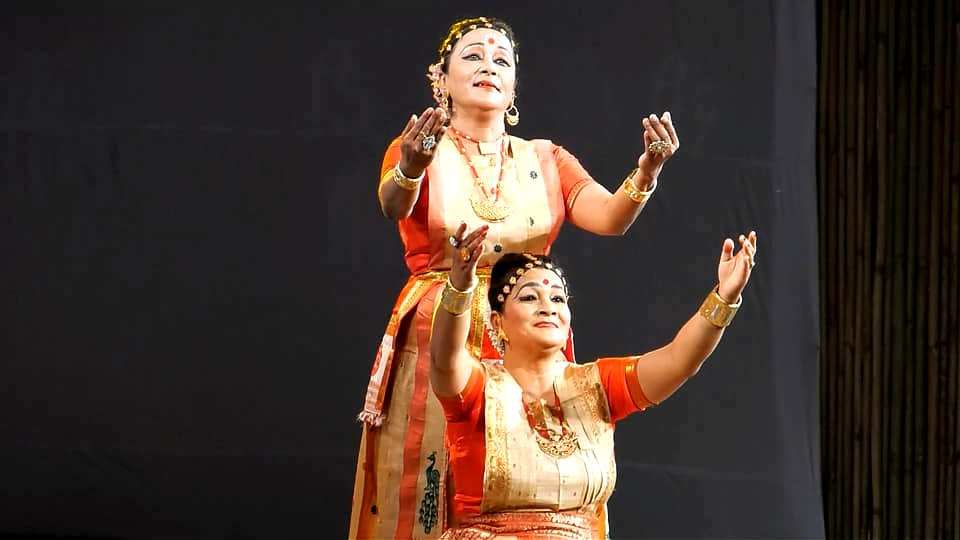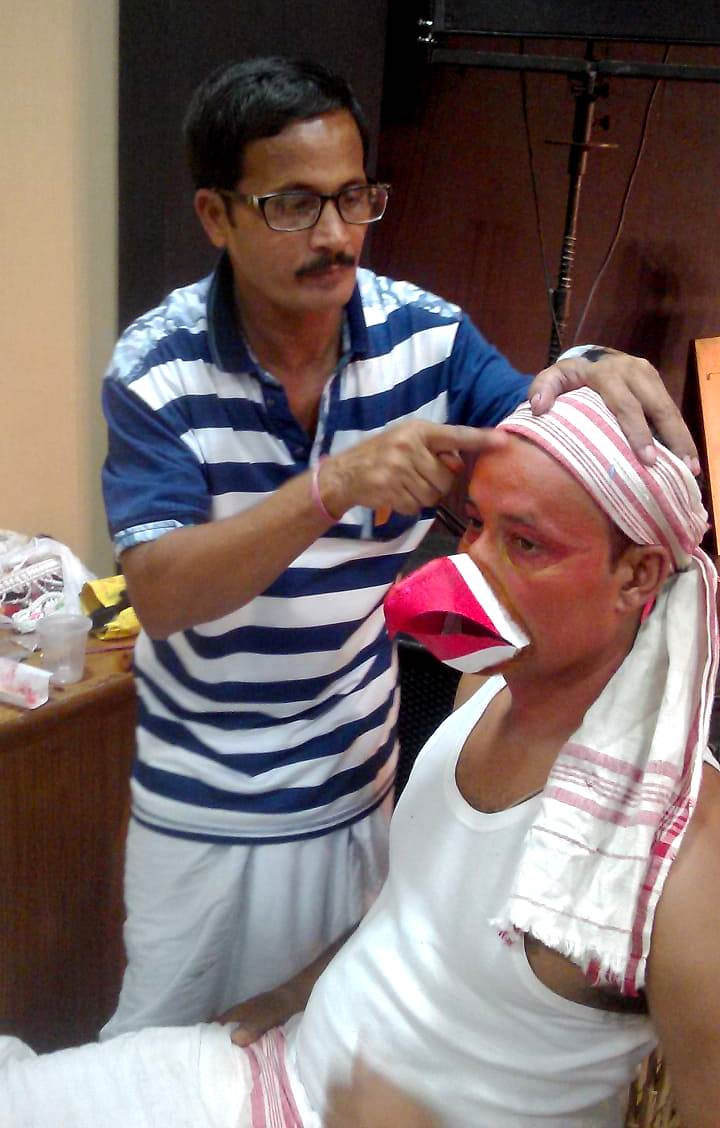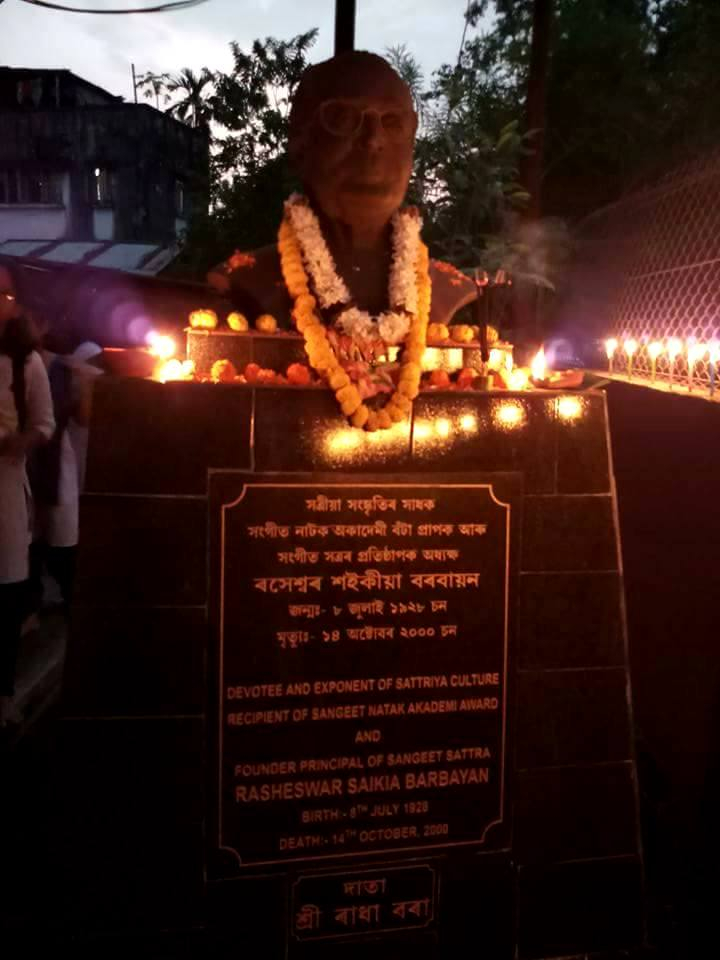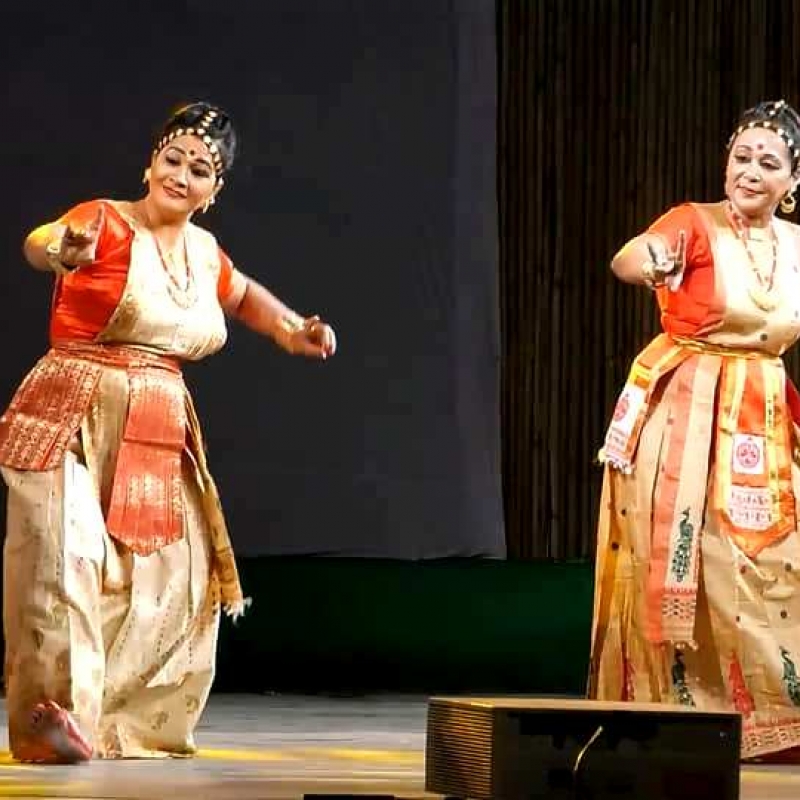Ritualistic worship is a vital part of Indian classical dance and music. The over-600-year-old Sattriya traditions and ritualistic practices associated with medieval Vaishnavite monasteries, or sattras, are integral to the cultural heritage of Assam. They mirror the traditional idioms of the land and life, and provide a vivid perspective on the culture of the Assamese people.
While we trace the paradigmatic shift of Sattriya dance and culture from the naamghar (prayer house) to the proscenium, it is necessary to examine how they are now the subject of greater scrutiny and debate as notions of culture, nation, identity and history have begun to shift in response to economic and sociocultural changes.
Assam has a rich cultural heritage, with music and dance interwoven into the social fabric of the land. Sattriya Nritya (Fig.1), one of the eight principal Indian classical dance forms, portrays human emotions, love and devotion. It narrates stories from myths and religious scriptures, and is an integral part of the celebration of life in Assamese culture.

The multiple genealogies of Sattriya Nritya articulate a complex intersection of the region’s history and culture. The dance form was born of the ankiya bhaona (a particular presentation of one-act plays called ankiya naat; Fig. 2), conceived by Shankardeva (1449–1568) as a performance art for the dissemination of the Bhakti movement in Assam. This highly stylised theatrical form—with nritya (dance), natya (drama), sangeeta (music) and abhinaya (acting) coalescing—was initiated as a means of worshipping the unchanging absolute. Awakening bhakti (devotion) rasa in the minds of the audience remains the predominant goal of the performance in any congregation. In each of the artistic presentations of Sankardeva—starting from his first dramatic play, Cinha Yatra, performed at Bardowa, to his subsequent six plays, popularly called ‘Ankiya Naator Bhaona’, along with his other musical or poetic compositions—transmitting bhakti rasa was primary to the performance.

The neo-Vaishnavite movement in Assam brought about an all-pervading cultural resurgence, with Sattriya music and dance, borgeet (Vaishnava devotional songs) and gayan-bayan (gayan is the singer and bayan is the instrument player). Nritya and natya were both offspring and catalysts of this enduring tradition. The sattra with its kirtan ghar (prayer hall) and naamghar, remains the nucleus of diverse communities in Assam. As Pradip Jyoti Mahanta notes,
a twofold process got embodied in the Sattriya Dance in getting structured as an organized form of performance. On the one hand the basic structure of the form found in inheritance was adhered to and pursued religiously; on the other hand gifted exponents among the Sattra inmates generationally embellished and enlarged them with “decorative frills” without compromising the foundational philosophy of the faith which lay embedded in such numbers. So an aesthetic approach towards the art form was thus inbuilt in it through the centuries.[1]
While religious lore and mythology dominate this traditional cultural idiom, they do not merely represent folklore but are integrated into the daily lives and beliefs. In fact, the term Sattriya Nritya is appended to the dance form traditionally preserved, pursued and practised in the Vaishnavite monasteries, which formed an indispensable part of the plays of Sankardeva and his principal apostle, Madhavdeva.
The sattras were envisioned as repositories and the preserve of the new faith of Vaishnavism, intended to sustain religious learning through music, dance, drama and naam-kirtan born out of this neo-renaissance milieu. While an overwhelming part of the Sattriya tradition reflects in the angikabhinaya or expressions through mudras, gestures and postures, and vacikabhinaya, or footwork, along with its elaborate dress, decor and dances, it was originally practised in the precincts of the naamghar. When it was performed in the precincts of the sattra as a form of worship, the costume was simpler and less ornate than when it was a performance. Strictly laid-down codes became part of Sattriya only after it was declared a classical dance form.
The Sattriya tradition has two distinctively separate streams—the bhaona-related repertoire and the dance numbers, which are independent of bhaona performance—that are governed by codes in terms of hastas (hand or finger gestures), music and footwork. There is a specific dance for every character in the dance-dramas, including the sutradhar (stage manager) or the director of the play. Inclusion of different numbers like pravesa naach (entry dance), prasthanar naach (exit dance), yuddhar naach (warrior’s dance) and so on, apart from the preliminaries called gayan-bayan, also known as purvaranga (dance performed as prelude or at the beginning of the performance), are indispensable part of these ankiya naats.
Sattriya Nritya as it stands today would not have been possible without the contributions of the foot soldiers of the tradition who anonymously perform their small but significant role in furthering the tradition. Artistes like Pitambar Deva Goswami, the sattradhikar (head of the sattra) of Garamur Sattra in Majuli pioneered in bringing it from its original narrow confines to the modern stages in the 1920s. It has been recorded that this secular overturn took place on the occasion of Raas Purnima in 1922 when Sattriya Nritya was presented in the raas leela at the Tarun Ranga Mancha, a modern stage erected for the occasion.
Inclusion of Women
In the erstwhile male-dominated culture of the sattras, Sattriya dances were performed as a sacrosanct form of worship only by male monks. It is important to note that women were initially not directly included in the Sattriya tradition, especially in the context of the celibate neo-Vaishnavite order. However, despite being a gendered performative form, Sattriya gradually opened itself to women with the efforts of Sri Rasheswar Saikia Barbayan (Fig. 3), who played a significant role in bringing Sattriya dance closer to the common people.

Hailing from Purani Kamalabari Sattra in Majuli, one of the principal centres of the Vaishnava tradition of Assam, Barbayan was trained in the Sattriya way of life, dance and music under the tutelage of various adhyapaks (teachers) in the sattra, including the legendary Maniram Dutta Muktiyar. He later carried it forward by teaching women, relieving the Sattriya tradition from the shackles of patriarchy. An expert in khol (a type of percussion instrument), nritya and natya, Barbayan, with his performances in ankiya bhaona, earned accolades within the sattra and outside. Deeply inspired by Kalaguru Bishnu Rabha, he soon took up the pursuit of Sattriya Nritya in a more secularist way beyond the precincts of the sattras. With a view to familiarise the urban spaces with Sattriya culture, dance, acting and music, he, along with like-minded artistes, set up an institution called Bayanar School (the name was later changed to Sangeet Sattra) with Dr Maheshwar Neog, who as the president of the school contributed significantly to the acceptance of Sattriya Nrtiya as one of the classical dances of India.
Sangeet Sattra was the first centre for formal training, with a syllabus-oriented pedagogy relating to Sattriya gayan-bayan. It gradually became the epicentre of propagation of the Sattriya tradition and culture, and has played a significant role in spreading awareness. Unlike proponents of other dance forms of India, the first generation of Sattriya dancers in Assam neither faced social and public condemnation nor was the tradition itself ever looked down upon.
Within a short span of time of Sattriya entering the public space, the sattras succeeded in their endeavour to spread the neo-Vaishnavite philosophy and the Sattriya culture among diverse socioeconomic groups, including the tea-garden labourers of the neighbouring areas. This was largely due to the scintillating theatrical performances of bhaona and raas leela during the annual tithis (commemorative ocassions) of the gurus like Shankardeva, Madhavdeva and Badala Ata. As per the reports of the ‘Seminar on the Sattriya Dance of Assam’ organised by the Directorate of Culture, Government of Assam, and the Sangeet Natak Akademi,
[t]his dance tradition pursued, practised and handed down to generations in the recluse of the Sattra institution as a part of the various prayer services, rituals and festivals has also entered the arena of the secular art world and over the decades is pursued as a rich and distinct art form.[2]
Migrations
Following Rasheswar Saikia Barbayan’s move from Majuli to Guwahati, the Sattriya culture and tradition was catapulted from the ‘sacred’ space of the sattra to the public domain, changing the face of the Sattriya Nritya forever. This intense awareness of the multiple genealogies of Sattriya Nritya further articulates a complex and convoluted interaction of the region’s history and culture. Several key female dancers, such as Garima Hazarika, Indira P.P. Bora, Pushpa Bhuyan, Sharodi Saikia and Dr Mallika Kondoli, undertook, as a personal responsibility, learning this art form under the tutelage of exponents like Barbayan, Ghanakanta Bora Barbayan, Sailen Saikia and others. Their efforts saw Sattriya Nritya achieve recognition as an important performance genre throughout India.
The move towards identifying the tradition of the sattras as representing the cultural ethos of Assam started in the late 1940s from Shillong, the then capital of Assam. These initiatives were started under the leadership of Jibeshwar Goswami of Bholaguri Sattrain Kaliabor, Nagoan, with the support of the British government, and later carried forward by Pitambar Deva Goswami. Following Independence, the growth and development of this performance art institutionally owes to the Sangeet Natak Akademi of the Northeast and the scholarly efforts of Maheshwar Neog.
The sattras in Majuli remained unstable due to the torrential rains, floods and soil erosions that led to mass migration of many of their members. With the migrations, the closed and rigid structures of sattras, where the ritualistic performances were sustained and cultivated, transmuted into charmless buildings of cement and concrete.
The river island of Majuli suffers from heavy soil erosion and flood caused by the harsh currents of the Brahmaputra River and its tributaries. Every year a village or two is lost to the Brahmaputra. In 1974, for instance, the whole of Kamalabari Sattra (now located in Titabor in the Jorhat district of Assam) was lost to the river. The monks of this sattra were for the first time forced to leave Majuli. Even though the Assam state government provided the sattra with land to re-establish itself, it was nothing compared to what they had lost. This not only changed the entire economics of the sattra but also forced its members to seek opportunities beyond its premises. The monks began to sustain themselves by taking up teaching jobs outside. With these teachers travelling the length and breadth of the country, more and more people from across regions and cultures were attracted to Sattriya dance, taking the art form to the public. Thus, the sacrosanctity of the dance form started to erode, which resulted in Sattriya dance developing a more objective meaning free from the contextual markers of rituality and worship.
Art of Contradictions
Regardless, sattras in Majuli still retain many traditional characteristics of Sattriya, perhaps because its cultural system and ethos remains distinct. This could be due to Majuli’s geographical isolation from mainland Assam. In these sattras, Sattriya Nritya is still a ritual practice that is part of the neo-Vaishnavite tradition of worship of the divine. It is a religious performance culturally and spiritually accessible to the residents of the centre as well as devotees from nearby villages.
In this context it also becomes necessary to talk about the neo-Vaishnavite tradition of Sankardeva which strategically leaves out sringara rasa (the erotic) while embracing all the other rasas. Sattriya traditions primarily focus on the bhakti rasa—worship of the divine, but in this case, specifically, Krishna bhakti (the rasa that is the prime emotion of union with the Lord). In ankiya naats as well as other compositions by Sankardeva and Madhavdeva, the prime focus was on the emotion of bhakti intertwined with the feeling of dasya (service to the Lord) or vatsalya (motherly love) even for the rasar naach or gopir naach (raas leela or gopis’ dance). This made Sattriya rigid in its structure. With ideas like celibacy of the neo-Vaishnavite tradition in Assam, the sattras, in trying to uphold their religious ‘purity’ (renouncing the world and single-mindedly devoting oneself to the Lord), became a restrictive space. This also explains why in its initial stages Sattriya was exclusively a male domain.
Since its acceptance as a classic dance form, on November 15, 2000, Sattriya has become a bridge connecting Assam to the cultural whole of the Indian nation. This creates a platform for potential exchange of values between regions. However, as with all such exchanges, it is an ongoing process that will take years of engagement and understanding to fully materialise.

